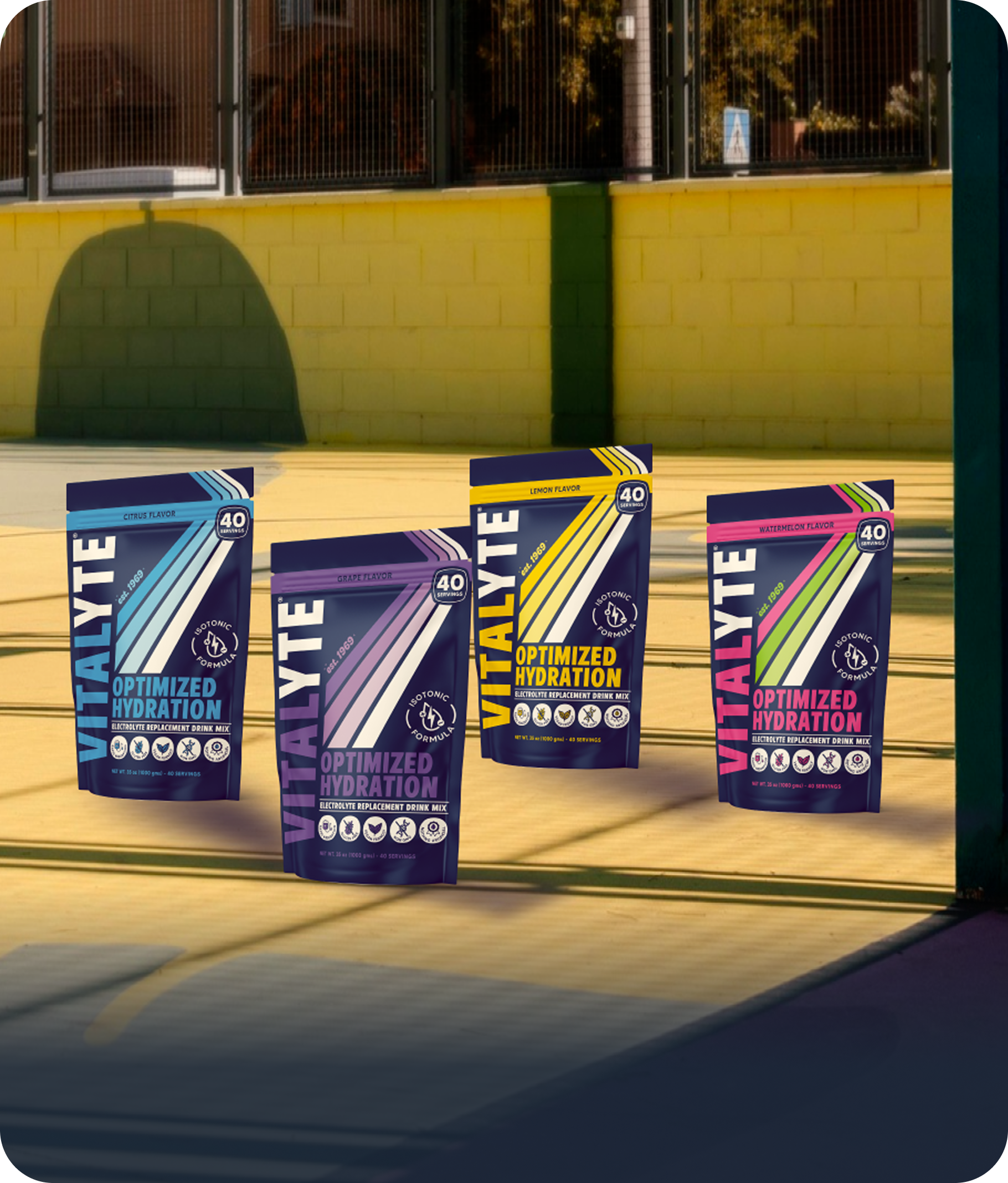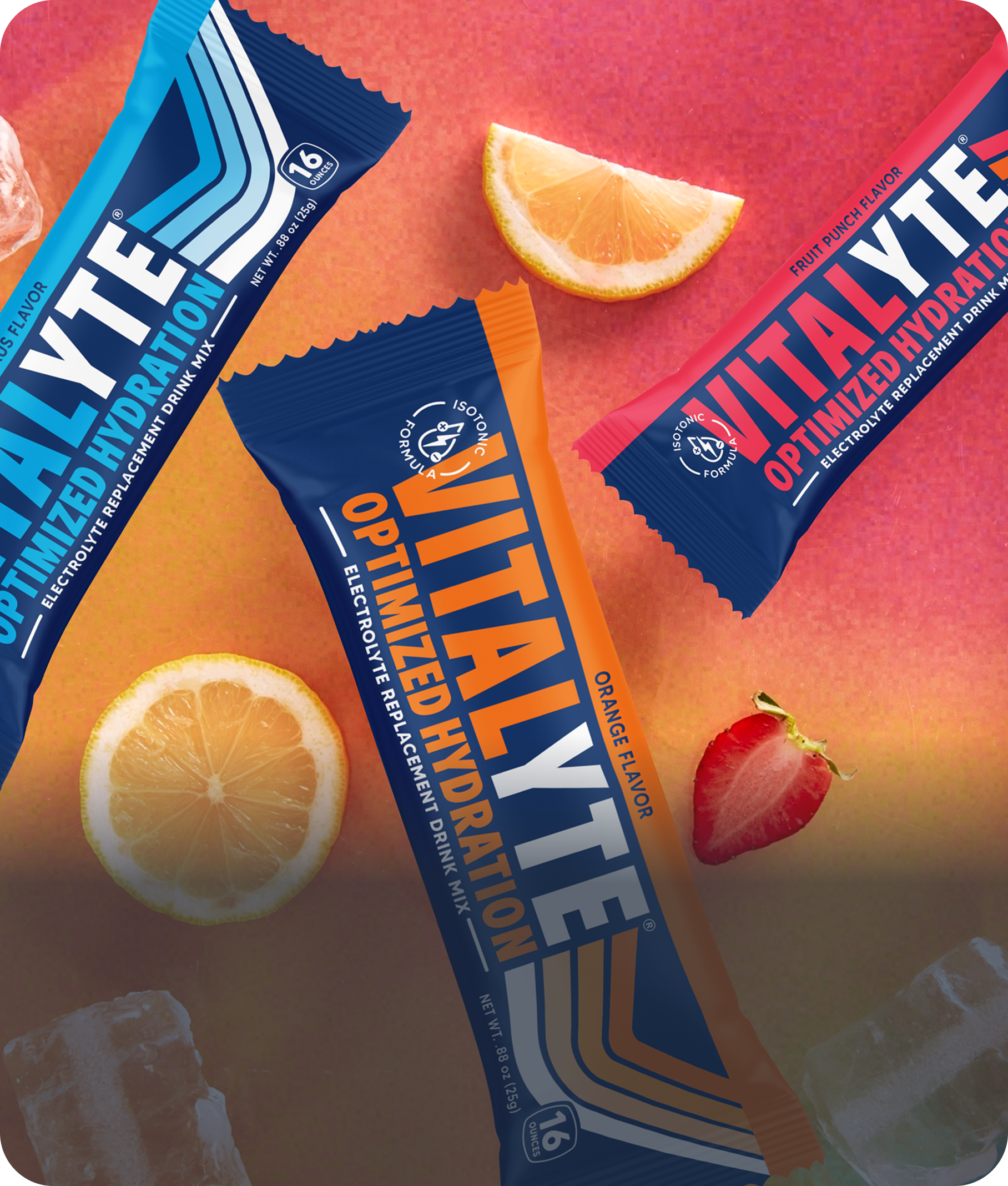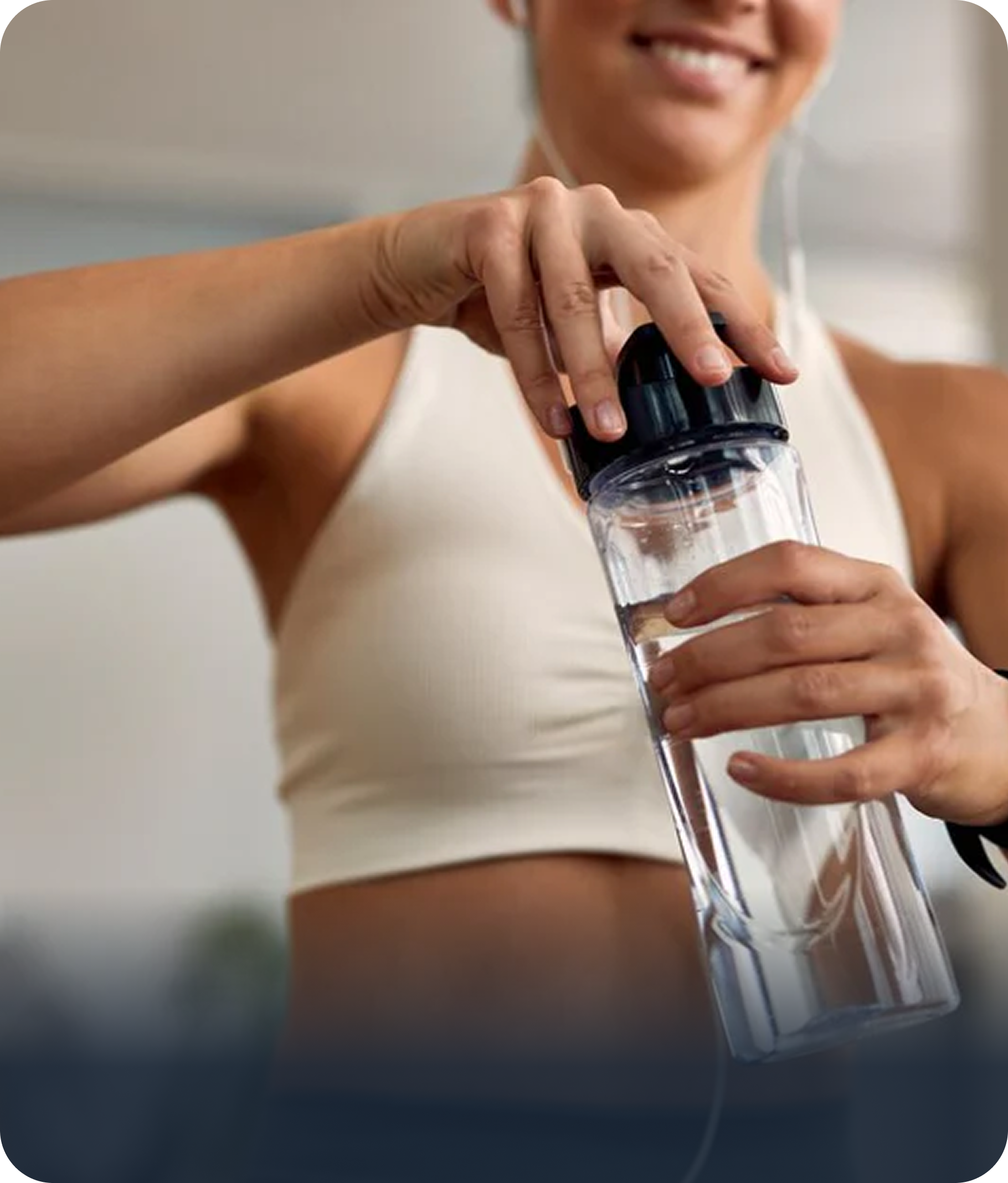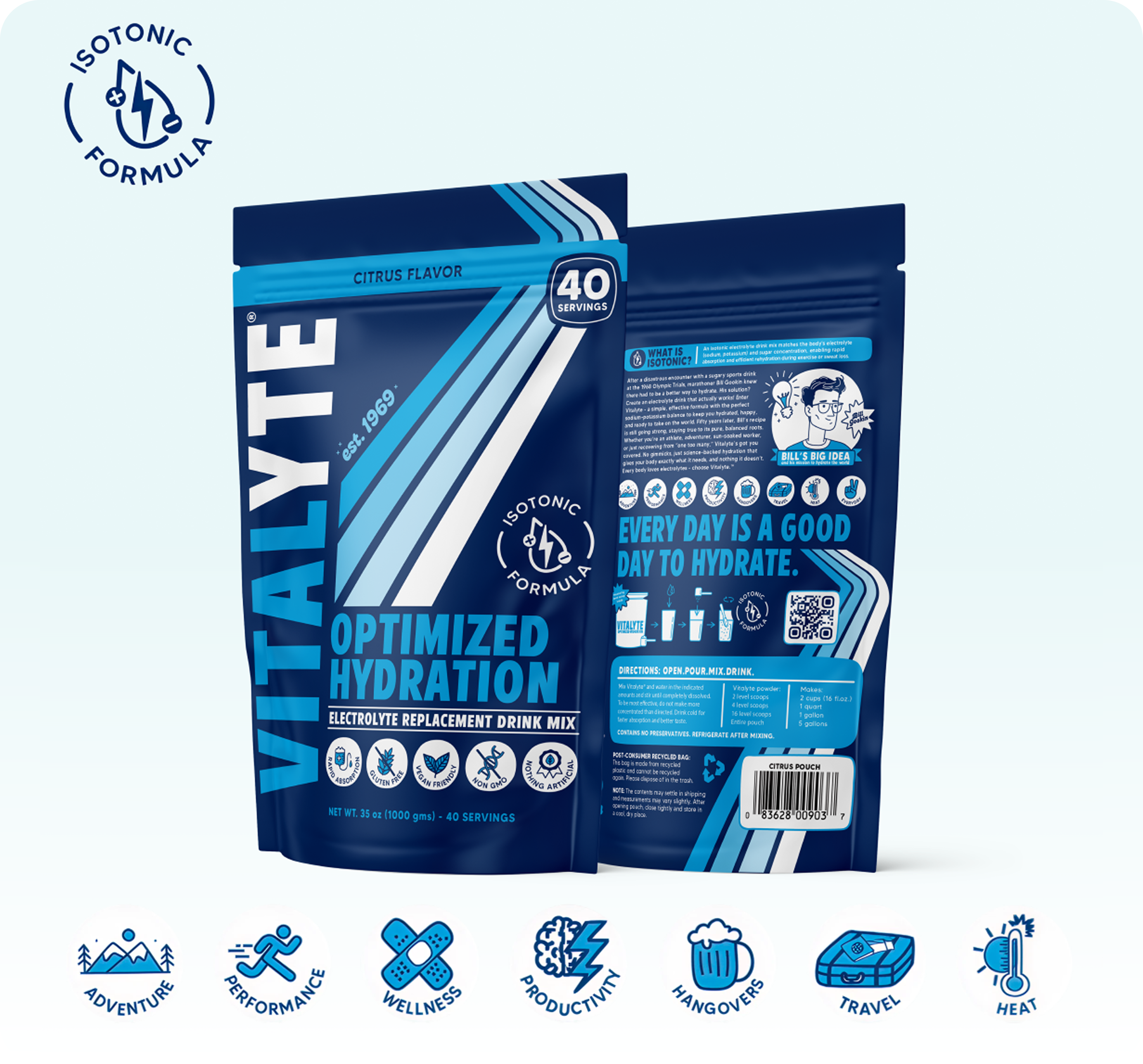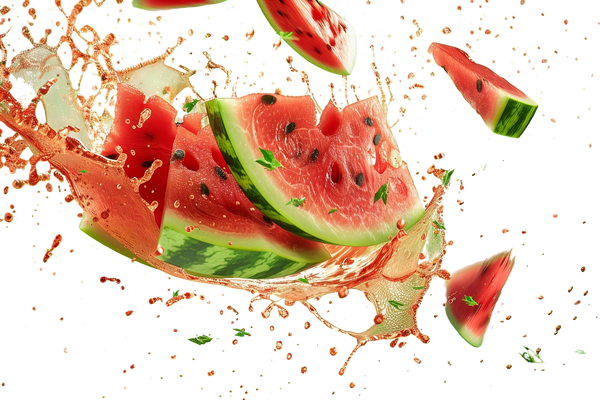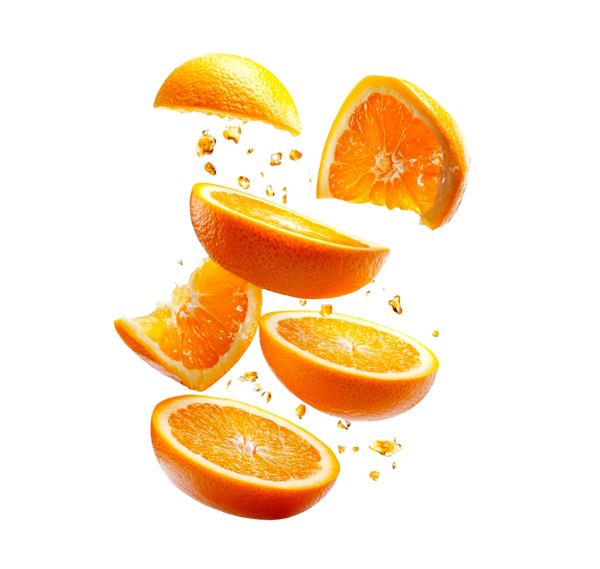When to Drink Electrolytes: The Athlete's Timing Guide
Share
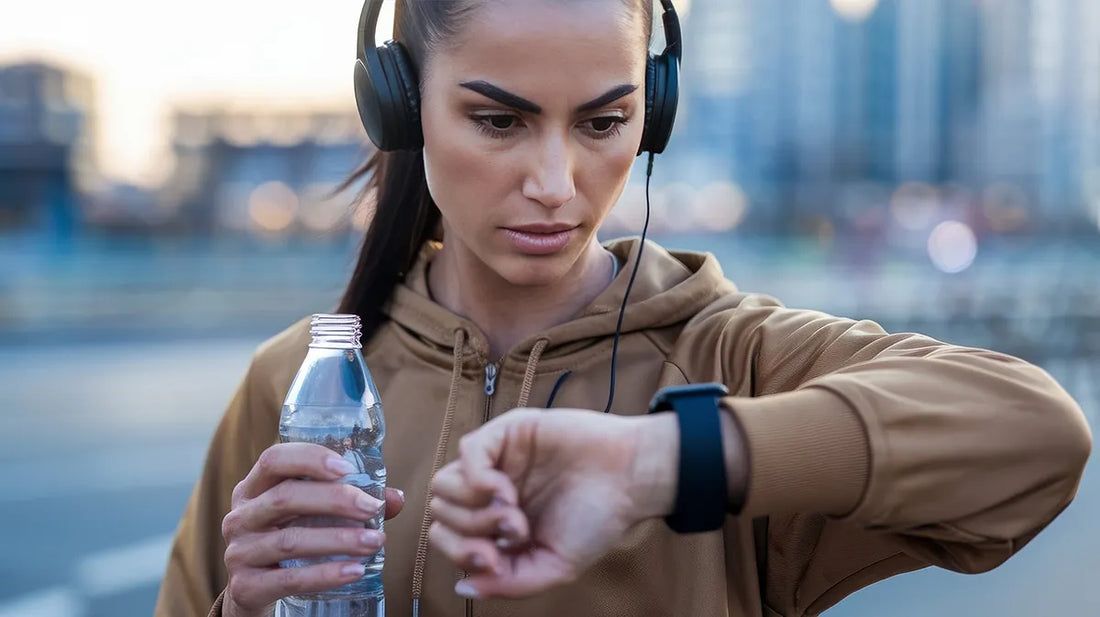
Last Updated: October 2025
You know you need electrolytes. But when you drink them matters just as much as what you drink.
Timing your electrolyte intake incorrectly can mean the difference between a personal record and hitting the wall at mile 18. Between finishing strong and cramping up. Between recovering quickly and dragging through your next training session.
Bill Gookin discovered this the hard way at the 1968 Olympic Trials Marathon. After a disastrous experience with a sugary commercial sports drink that failed him during the race, he went back to his biochemistry lab determined to figure out the timing and formulation that would actually work. It took 25 years of testing with himself as the primary test subject, but he eventually realized something profound: the body can't absorb what you give it at the wrong time, no matter how good the formula.
After 50+ years of real world testing with marathon runners, ultra endurance athletes, Search & Rescue teams, and everyday fitness enthusiasts, we've learned that strategic timing transforms electrolyte supplementation from "probably helpful" to "performance essential."
This guide cuts through the confusion with practical timing strategies for three critical windows: before, during, and after your training or competition.
The Three Windows: A Quick Overview
Here's what you need to know about electrolyte timing:
Before Exercise (90 minutes out): Pre loading with balanced electrolytes maximizes your fluid reservoir before you start sweating. This is especially critical for long efforts in heat.
During Exercise (60+ minutes): Continuous, controlled intake maintains performance and prevents both dehydration and the dangerous mistake of over drinking plain water.
After Exercise (within 2 hours): Aggressive replacement with balanced electrolytes accelerates recovery by helping your body retain the fluid you're drinking instead of immediately urinating it out.
The specifics of each window depend on your activity, environment, and individual sweat rate. Let's break down exactly when and how to use electrolytes for maximum benefit.
Before Exercise: Building Your Fluid Reserve
Most athletes start thinking about hydration when they're already sweating. That's too late.
The 90 Minute Pre Loading Strategy
For any training session or race lasting longer than 90 minutes, especially in hot or humid conditions, pre loading with balanced electrolytes gives you a significant performance advantage.
Here's why it works: When you consume electrolytes alongside fluids before exercise begins, your body temporarily retains more water in your bloodstream. You're essentially maximizing your starting tank before the losses begin.
The balanced approach (what 50 years of testing taught us):
90 minutes before your start time, drink 16 to 24 oz of properly formulated electrolyte solution. Use a balanced sodium potassium formula (not high sodium pills or concentrated salt). This provides electrolytes in the ratio your body actually needs without forcing potassium depletion.
Why balanced matters for pre loading: While some ACSM guidelines suggest 500mg sodium pre loading, this high sodium approach can backfire. As Bill Gookin discovered through decades of athlete testing: excessive sodium without adequate potassium forces your body to dump its own potassium reserves to maintain balance. The result? You start the race already depleted in the electrolyte most critical for preventing cramps.
The Vitalyte approach: pre-load with 16 to 24 oz of balanced electrolyte solution 90 minutes before. This delivers sodium for fluid retention PLUS potassium to prevent depletion, setting you up for sustained performance rather than early cramping.
This approach is especially valuable for athletes with very high sweat rates (2+ liters per hour). Since your stomach can only absorb about 1 liter per hour during exercise, starting with a fuller reservoir compensates for what you can't replace during the event.
Standard Pre Hydration (2 to 4 Hours Before)
For shorter efforts or moderate conditions, general fluid loading is sufficient:
2 to 4 hours before: Drink 5 to 7 mL per kg of body weight (roughly 12 to 20 oz for most athletes)
10 to 20 minutes before: Final top up of 6 to 8 oz
Check your hydration status with a simple urine test. Pale yellow indicates you're well hydrated. Dark yellow means you need more fluids.
When You DON'T Need Pre Loading
Skip the electrolyte pre loading for:
Workouts under 60 minutes
Cool weather, low intensity sessions
Morning runs when you're already well hydrated from the night before
Plain water with a normal breakfast is fine for these situations.
A timing lesson from the field: When Bill Gookin first tested his isotonic formula in a race, he preloaded with sodium and drank it strategically throughout. The difference was so dramatic that other runners immediately noticed. One fellow competitor said, "Call it 'Gookin aid' because it helped Bill so much!" That name stuck for 40 years, and the timing protocol he used that day became the foundation for what athletes still use today.

During Exercise: The Performance Window
This is where timing strategy gets critical and where most athletes make mistakes that cost them performance or, worse, their health.
The 60 Minute Rule
Under 60 minutes: For short, intense efforts, plain water is usually sufficient. Your body has enough electrolyte reserves to handle typical losses during this timeframe.
Over 60 minutes: You need both fluid AND electrolytes. Once you're sweating continuously for an hour or more, relying on plain water becomes counterproductive and potentially dangerous.
Why Timing During Exercise Matters: The Absorption Factor
Not all electrolyte drinks are absorbed at the same rate. The concentration of your drink (its "tonicity") directly affects how quickly your body can use it.
Fast absorption (isotonic drinks): Solutions with 4 to 5% carbohydrate concentration and balanced electrolytes move from your gut into your bloodstream rapidly, similar to an IV. This is what you want during activity.
Slow absorption (high sugar drinks): Traditional sports drinks with 6 to 8% sugar actually slow down hydration. That high concentration can even pull water from your body into your digestive system, exactly the opposite of what you need when sweating.
Bill Gookin tested hundreds of formulation variations over 25 years before landing on Vitalyte's isotonic concentration. As he discovered through relentless trial and error: "After testing for 25 years, I finally realized that it was physiologically impossible to improve the effectiveness and speed of absorption." The result? A formula that delivers faster absorption, better stomach tolerance, and sustained performance without the sugar crash, one that's remained unchanged because it simply can't be improved. (Learn more about why isotonic formulation matters in our complete electrolyte powder guide.)
The Practical During Exercise Protocol
For any activity over 60 minutes:
Fluid intake rate: 600 to 1200 mL per hour (20 to 40 oz/hour). Translate this to: 6 to 8 oz every 15 to 20 minutes. Don't wait until you're thirsty because by then, you're already behind.
Electrolyte concentration: Look for balanced formulas with moderate sodium (around 130 to 150mg per 16oz serving). This translates to roughly 250 to 300mg per liter. Enough to promote fluid retention and enhance absorption. Not so high that it depletes potassium or pulls water from circulation. Balanced with equal or greater potassium for optimal cellular function.
Carbohydrate content: 30 to 60 grams per hour for efforts over 60 minutes. Escalate to 90g/hour for ultra endurance (4+ hours). The carbs aren't just energy; they enhance sodium and water absorption in your intestine.
What this looks like in practice: For a 2 hour training run, you'd consume 32 to 48oz of properly formulated electrolyte solution throughout the session. Vitalyte's isotonic formula delivers exactly this balance: moderate sodium with balanced potassium, optimal carbohydrate concentration, and rapid absorption without stomach distress.
The Critical Mistake: Overhydrating or Using High Sodium Formulas
Here's what 50 years of real world testing taught us: The danger isn't just dehydration. It's also choosing the wrong electrolyte approach.
Exercise Associated Hyponatremia (EAH) occurs when athletes either drink too much plain water OR use excessively high sodium formulas that disrupt potassium balance. This primarily affects ultra endurance athletes in events over 4 hours, but the principle applies to everyone.
The balanced approach works best: Moderate sodium (around 135mg per 16oz) with equal or greater potassium prevents both dehydration AND the mineral imbalances that cause whole body cramping.
Don't force fluids beyond thirst. Modern research shows that drinking to thirst, not on a rigid schedule, is the safest approach for most athletes.
Warning signs you're using the wrong formula or overdoing it:
Feeling bloated or sloshy
Nausea during exercise
Cramping despite drinking plenty
Gaining weight during your event (yes, some athletes do this)
High Sweat Rate Athletes: Special Timing Considerations
If you lose more than 2 liters of sweat per hour (you can calculate this; see the section below), you face a unique challenge: You can't replace all your losses during exercise.
Your stomach's maximum absorption rate is about 1 liter per hour. If you're losing 2 to 3 liters per hour, full replacement is physiologically impossible.
The solution: Combine aggressive pre loading (90 minutes before) with maximum tolerable intake during (approaching 1L/hour), and prioritize rapid recovery immediately after.
The key is maintaining balanced electrolytes throughout. Don't try to compensate with ultra high sodium because this just creates new problems by depleting potassium. Stick with properly formulated solutions and accept that some deficit is inevitable for extreme sweaters.
After Exercise: The Recovery Window
Recovery timing is where many athletes fall short. You finished the workout... great! But your body is still in a deficit, and how quickly you address it determines how you'll perform tomorrow.
The 150% Replacement Rule
Here's the gold standard: Consume fluids equivalent to 150% of the body weight you lost during exercise.
Why 150% instead of 100%? Because your kidneys don't stop working just because you finished your run. You're still losing fluid through urination as your body rebalances. The extra 50% accounts for this ongoing loss.
The calculation:
-
Weigh yourself before and after exercise (ideally nude, after toweling off)
-
Subtract post weight from pre weight
-
Multiply the difference by 1.5
-
That's your target fluid intake
Example: Lost 2 pounds during your run? You need to drink 3 pounds of fluid (roughly 48 oz).
Timing Your Recovery Intake
Optimal window: Start immediately and finish within 2 hours
Maximum window: Complete within 6 hours
This aggressive timeline is critical for:
Athletes with multiple training sessions per day
Multi day events or competitions
Anyone who trains hard 5 to 6 days per week
If you're a weekend warrior who trains three times per week with rest days between, you have more flexibility. But faster is always better.

Why Balanced Electrolytes Are Non Negotiable After Exercise
Here's what happens if you chug plain water after a hard effort: Your kidneys rapidly excrete it. You're running to the bathroom every 30 minutes, never quite feeling rehydrated.
Balanced electrolytes change this equation. Sodium signals your kidneys to retain the fluid you're drinking, while adequate potassium prevents the depletion that causes delayed cramping. This combination dramatically accelerates how quickly you restore normal hydration status.
Recovery drink recommendations:
Use balanced electrolyte formulas (not high sodium)
Maintain moderate sodium with adequate potassium (around 135mg sodium to 193mg potassium per 16oz)
Include carbohydrates to replenish depleted glycogen
Continue drinking until you reach your 150% target
The isotonic formula that worked during exercise works for recovery too, though some athletes prefer higher calorie recovery drinks immediately post exercise for combined rehydration and refueling.
What About Food?
Salty foods absolutely help with recovery! Pretzels, crackers, soup, or even pizza provide sodium along with other nutrients. However, solid food is digested more slowly than liquid, so don't rely on it exclusively if you need rapid rehydration (like for an afternoon training session after a morning workout).
The most effective approach: Drink your electrolyte solution first, then eat a recovery meal that includes sodium rich foods.
Special Timing Scenarios: When the Rules Change
Standard timing protocols work for most situations. But certain conditions require adjusted strategies.
Hot Weather & High Humidity
Temperature above 80°F or humidity above 60%? Your sweat rate can increase by a full liter per hour.
Timing adjustments:
Pre loading becomes essential, not optional
Increase your during exercise intake to the high end of the range (1000 to 1200 mL/hour)
Focus on "out of exercise" hydration by maintaining good fluid status throughout the day, not just during activity
Maintain balanced formulations rather than increasing sodium alone
Heat also increases the risk of both dehydration and heat illness. In extreme conditions, preventing heat casualties becomes more important than chasing a PR.
Altitude (Above 8,000 Feet)
Increased respiration at altitude means more water and electrolyte loss through breathing, losses you don't see as sweat.
Mountain athletes and climbers rely on consistent electrolyte intake throughout the day at altitude, not just during activity. Timing shifts from "during exercise" to "throughout waking hours."
Multiple Workouts Per Day
Training twice daily? The timing window between sessions is critical.
Protocol:
Immediately after session 1: Begin aggressive 150% replacement
Continue drinking electrolyte solution until next session
Pre load again 90 minutes before session 2 if it's high intensity or long duration
Don't make the mistake of thinking you'll "catch up" overnight. Your afternoon performance depends entirely on how well you recovered from the morning.
Low Carb & Ketogenic Diets
Ketogenic diets cause increased water and sodium loss through your kidneys, independent of exercise. Many athletes experience "keto flu" symptoms that are actually electrolyte deficiency.
Timing approach:
Daily electrolyte supplementation, not just around workouts
Morning intake helps prevent the fog and fatigue many keto athletes experience
Balanced formulas prevent the potassium depletion that high sodium formulas can cause
Youth Athletes: Different Bodies, Different Timing
Children and teenagers aren't just small adults. They handle fluid and electrolyte loss differently.
Key Differences
Dehydration threshold: Kids are considered dehydrated at 1% fluid loss versus 2% for adults. They hit performance decline faster.
Puberty matters: Pre pubescent children sweat less and lose fewer electrolytes. Teenagers sweat significantly more and need closer to adult replacement strategies.
Practical Timing for Young Athletes
Ages 9 to 12:
3 to 5 oz every 20 minutes during activity
Plain water plus salty snacks works for most situations
Electrolyte drinks for practices over 60 minutes or hot weather
Target around 130mg sodium per 16oz (half the adult concentration)
Ages 13 to 18:
6 to 9 oz every 20 minutes during activity
Electrolyte drinks for sustained efforts
Can approach adult formulations for intense or long training
For all youth athletes, plain water combined with proper meals and snacks often covers electrolyte needs for moderate activity. Save the sports drinks for genuine high demand situations.
How to Calculate YOUR Optimal Timing: The Sweat Test
Generic guidelines are useful starting points. But your individual sweat rate determines your precise fluid and electrolyte needs.
Sweat rates vary enormously from less than 0.5 liters per hour to over 3 liters per hour based on your genetics, fitness level, acclimatization, exercise intensity, and environment.
The Simple Sweat Test Protocol
Do this test under conditions similar to your target race or training:
-
Weigh yourself nude before exercise (in kg or pounds)
-
Exercise for 60 minutes at target intensity
-
Track fluid intake during that hour (in mL or oz)
-
Weigh yourself again nude after exercise (towel off sweat first)
-
Calculate: Sweat Rate = (Pre weight minus Post weight) + Fluid consumed
Example:
Lost 1.5 lbs during the hour
Drank 16 oz (1 pound) of fluid
Sweat rate = 1.5 + 1.0 = 2.5 lbs/hour (roughly 1.2 liters/hour)
This number tells you how much fluid you should aim to consume per hour during similar conditions. Most athletes should target replacing 80 to 100% of losses during exercise, with the gap made up through pre-loading and recovery.
When to Retest
Your sweat rate is a "moving target." Retest when:
Seasons change (heat acclimatization affects sweat rate)
You're preparing for a race in different conditions
Your fitness level changes significantly
You're training at altitude
The Supplement Controversy: What Actually Works
Let's address a common question: What about electrolyte pills or tablets?
Here's what 50 years of athlete feedback revealed: Electrolyte supplements (pills/tablets) have never been shown to prevent cramping, illness, or improve performance.
The research is clear and sometimes surprising:
Studies on endurance runners found that electrolyte pills showed little to no effect on blood sodium levels. The pills simply don't provide enough sodium in a usable form during the critical time window.
Worse, if athletes take pills while drinking excessive plain water (thinking the pills will "protect" them), they actually increase the risk of hyponatremia. The false sense of security leads to dangerous overhydration.
What does work: Properly concentrated sodium integrated into your fluid intake with balanced potassium. This ensures you're getting electrolytes precisely when your body is absorbing the water.
The modern approach focuses on controlled fluid intake with appropriate electrolyte concentration, not pills as a Band Aid for poor hydration strategy.
Quick Reference: Your Timing Cheat Sheet
Before Exercise
Short effort (less than 60 min) or cool weather:
General hydration: 12 to 20 oz, 2 to 4 hours before
Final top up: 6 to 8 oz, 10 to 20 minutes before
Electrolytes: Optional
Long effort (60+ min) or hot/humid:
Balanced electrolyte pre loading: 16 to 24 oz, 90 minutes before
Use isotonic formula with balanced sodium potassium
General hydration as above
During Exercise
Under 60 minutes:
Plain water sufficient for most athletes
6 to 8 oz every 15 to 20 minutes
Over 60 minutes:
Electrolyte solution: 600 to 1200 mL/hour (20 to 40 oz/hour)
Balanced formula with moderate sodium and adequate potassium
Carbs: 30 to 60g per hour (up to 90g for ultra endurance)
Drink to thirst; don't force excessive intake
After Exercise
All durations:
Start immediately, finish within 2 hours (6 hours maximum)
Volume: 150% of weight lost
Use balanced electrolyte formulas
Add carbohydrates for glycogen restoration
The Bottom Line: Timing Is Strategy
After testing with thousands of athletes over five decades from Olympic swimmers to weekend warriors the pattern is unmistakable: When you drink electrolytes matters as much as what you drink.
The three window approach transforms hydration from reactive (drinking when thirsty, wondering why you're cramping) to strategic (building reserves before, maintaining during, recovering after).
As Bill Gookin learned through decades of personal testing and refinement: timing can't fix a bad formula, but even a perfect formula fails if you drink it at the wrong time. His advice to athletes remains as relevant today as it was in 1971: "Life is calling. Answer with Vitalyte. No matter what your goals in life, Vitalyte can be with you all of the way."
But here's the truth: Even perfect timing can't overcome a poorly formulated product.
The isotonic concentration that Vitalyte spent 25 years refining isn't marketing language. It's the difference between rapid absorption and stomach distress. The balanced electrolyte ratios prevent the potassium depletion that causes full body cramping. The natural ingredients mean your gut tolerates it during hard efforts.
Timing tells you when. Formulation determines whether it actually works.
Start with the protocols in this guide. Test and adjust based on your individual response. Calculate your sweat rate for precision. And choose a formula that's been proven in the real world, not just designed to look good on Instagram.
Your next PR might just come down to better timing.
Ready to optimize your hydration timing? Shop Vitalyte's isotonic electrolyte powder or learn more about our 50 year legacy.
Frequently Asked Questions
Q: Can I drink electrolytes every day, even on rest days?
A: Yes, especially if you train frequently. One serving daily maintains baseline hydration status and can help you feel better overall. If you're on a low carb diet or live in a hot climate, daily intake becomes even more beneficial.
Q: What if I forget to pre-load before a race?
A: Don't panic. Focus on controlled intake during the event. Stick to the 600 to 1200 mL/hour guideline and don't overdrink. You'll likely perform slightly below optimal, but you can still have a solid race. Just don't try to "catch up" by chugging excessive fluids early in the event.
Q: Should I drink electrolytes at night?
A: Generally no unless you're doing an overnight ultra or have a specific medical reason. Electrolyte intake late in the evening can disrupt sleep by causing frequent urination. Focus your intake around activity windows and throughout the day.
However, if you experience nighttime leg cramps, electrolytes before bed might help. Magnesium and potassium deficiencies are common culprits for muscle cramping. In this case, the benefit of preventing cramps may outweigh the minor sleep disruption from nighttime bathroom trips.
Q: How do I know if I'm a "salty sweater"?
A: White residue or crusty salt on your skin, hat, or clothes after exercise indicates high sodium loss. Burning eyes from salty sweat, frequent muscle cramps despite good hydration, or feeling significantly depleted after exercise are other signs. Consider a sweat test for precise measurements.
Q: Can I mix electrolyte powder with coffee or tea?
A: You can, but it's not ideal. Caffeine has a mild diuretic effect, and hot beverages aren't practical during exercise. Save your coffee for before training and mix your electrolytes with plain water for optimal absorption.
Q: What about coconut water as a natural alternative?
A: Coconut water is naturally high in potassium but low in sodium, the opposite of what you lose in sweat. It's not an effective replacement for properly formulated electrolyte drinks during or after exercise. Fine for casual sipping, insufficient for athletic hydration needs.
This article is for informational purposes only and doesn't constitute medical advice. If you have underlying health conditions or take medications affecting fluid balance, consult your healthcare provider before changing your hydration strategy.
About the Author
Evan Lucas, COO of Vitalyte
Evan has been with Vitalyte for 27 years, working to carry forward Bill Gookin's legacy of creating honest, effective hydration solutions. He uses Vitalyte daily for general wellness and hydration, and helps guide the company's commitment to real-world testing and straightforward science over marketing hype.
